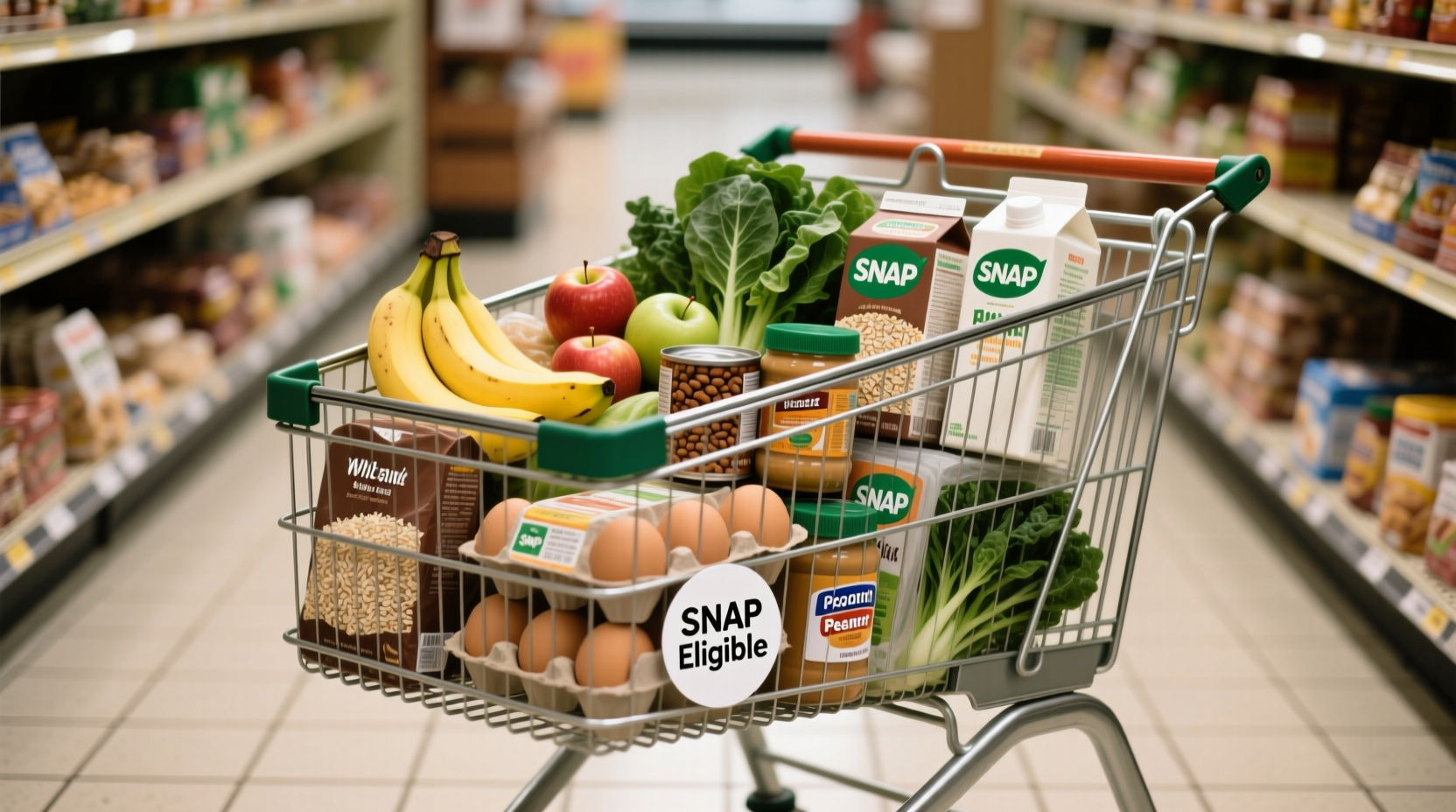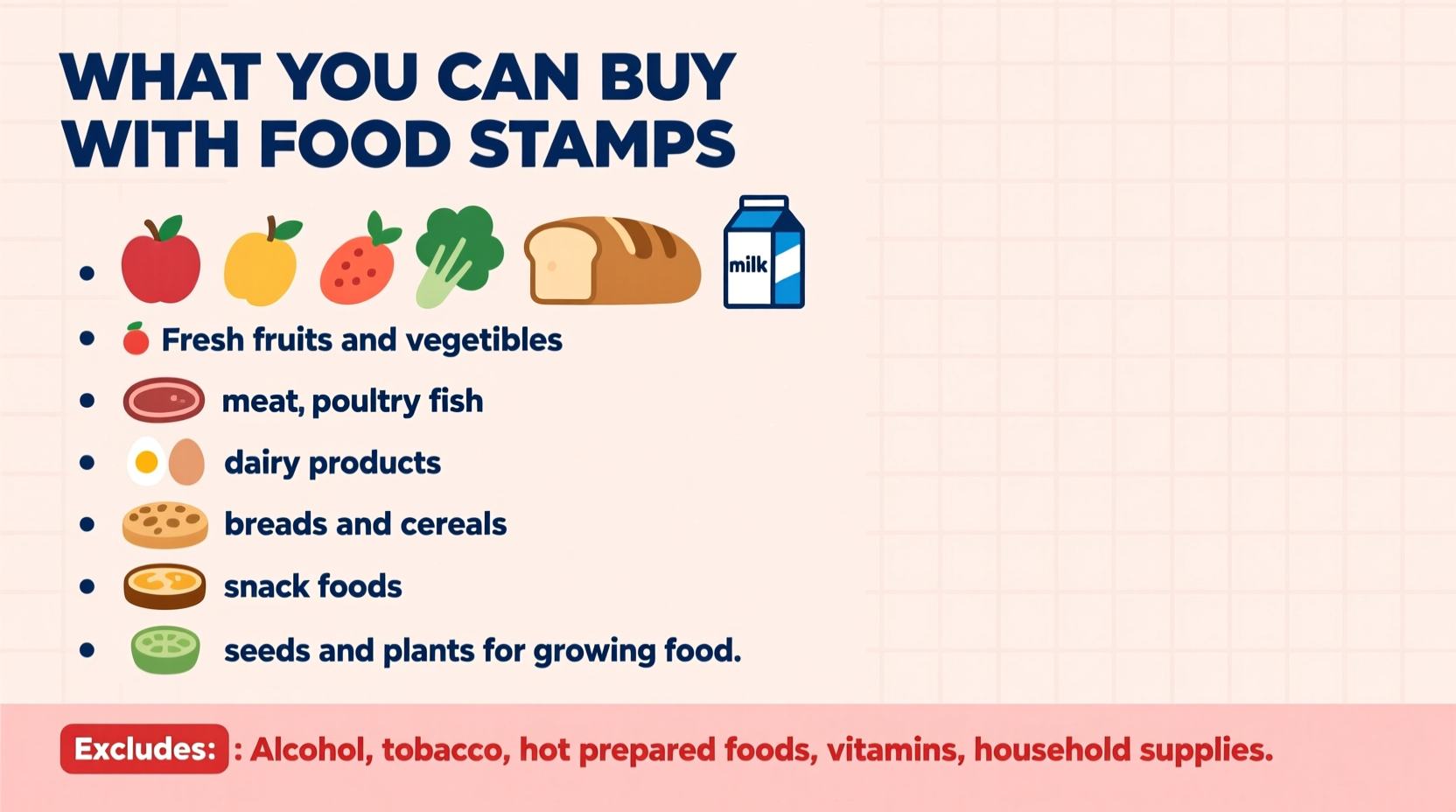Understanding exactly what you can purchase with SNAP benefits is crucial for making the most of your food assistance. This guide breaks down eligible items, common misconceptions, and practical shopping strategies to help you navigate the program confidently.
What SNAP Benefits Actually Cover
When you're using your EBT card at checkout, knowing exactly what qualifies can prevent frustrating moments at the register. The Supplemental Nutrition Assistance Program (SNAP) has clear guidelines about eligible purchases that focus on providing nutritious food for your household.
| Eligible Items | Ineligible Items |
|---|---|
| Fresh, frozen, and canned fruits and vegetables | Alcoholic beverages |
| Meat, poultry, and fish | Tobacco products |
| Dairy products and eggs | Vitamins and medicines |
| Bread and cereals | Hot foods prepared for immediate consumption |
| Seeds and plants to grow food | Non-food household items |
| Snack foods and non-alcoholic beverages | Pet food |
Special Cases and Common Misunderstandings
Many SNAP recipients encounter confusion about borderline items. Here's what you need to know about special situations:
Hot Food Exception
While generally you cannot purchase hot prepared foods with SNAP, some states participate in the Restaurant Meals Program which allows eligible elderly, disabled, and homeless individuals to buy prepared meals at participating restaurants. This program varies significantly by location and eligibility requirements.
Gardening for Food Security
One of SNAP's most valuable but underutilized benefits is the ability to purchase seeds and plants that produce food for your household to eat. This provision, established in the 1973 Farm Bill, supports long-term food security through home gardening. Many families don't realize they can use their benefits to start vegetable gardens that provide fresh produce throughout the growing season.

Shopping Strategies for SNAP Recipients
Maximizing your benefits requires planning and knowledge of store policies:
Store Selection Matters
Not all stores accept SNAP benefits equally. While most major grocery chains participate, some smaller stores may only accept EBT for certain items. The USDA maintains an online directory of SNAP-authorized retailers that you can search by location.
Combining Payment Methods
You can use your EBT card alongside other payment methods for the same transaction. If you're purchasing both eligible and ineligible items, simply inform the cashier you'll be using multiple payment methods. Your EBT benefits will be applied to eligible items first.
Tracking Your Balance
Regularly checking your EBT balance prevents surprises at checkout. Most states offer multiple ways to check your balance including:
- Calling the customer service number on your EBT card
- Checking your receipt after purchases
- Using state-specific mobile apps
- Visiting your state's EBT program website
Historical Context of SNAP Purchasing Rules
Understanding how SNAP eligibility has evolved provides context for current rules:
| Time Period | Key Changes to Eligible Purchases |
|---|---|
| 1939-1943 | Original Food Stamp Program allowed purchase of any food items |
| 1964 | Modern SNAP program established with focus on staple foods |
| 1977 | Standardized nationwide rules prohibiting alcohol, tobacco, and hot foods |
| 2008 | Expanded farmers market participation through SNAP incentives |
| 2020-Present | Temporary expansion of online grocery purchasing during pandemic |
Avoiding Common Pitfalls
Many SNAP recipients unknowingly make mistakes that reduce their benefits' effectiveness:
- Not checking expiration dates - Perishable items that spoil before consumption represent wasted benefits
- Overlooking sales cycles - Planning meals around weekly grocery sales maximizes purchasing power
- Missing out on bonus programs - Many states and localities offer matching funds at farmers markets
- Confusing WIC and SNAP rules - These programs have different eligibility requirements for food items
Planning Your SNAP-Friendly Grocery List
Creating an effective shopping list before you go to the store helps maximize your benefits. Focus on nutrient-dense foods that provide the most value:
- Proteins: Beans, lentils, eggs, canned tuna, chicken thighs
- Grains: Brown rice, oats, whole wheat pasta
- Produce: Seasonal vegetables, frozen fruits, potatoes
- Dairy: Milk, cheese, yogurt (check for sales)
Meal planning around sales flyers and using basic cooking techniques can stretch your benefits further than relying on pre-packaged convenience foods.











 浙公网安备
33010002000092号
浙公网安备
33010002000092号 浙B2-20120091-4
浙B2-20120091-4